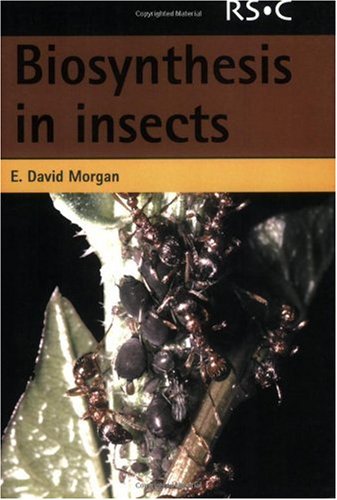

Most ebook files are in PDF format, so you can easily read them using various software such as Foxit Reader or directly on the Google Chrome browser.
Some ebook files are released by publishers in other formats such as .awz, .mobi, .epub, .fb2, etc. You may need to install specific software to read these formats on mobile/PC, such as Calibre.
Please read the tutorial at this link. https://ebooknice.com/page/post?id=faq
We offer FREE conversion to the popular formats you request; however, this may take some time. Therefore, right after payment, please email us, and we will try to provide the service as quickly as possible.
For some exceptional file formats or broken links (if any), please refrain from opening any disputes. Instead, email us first, and we will try to assist within a maximum of 6 hours.
EbookNice Team

Status:
Available5.0
5 reviewsThe chemical study of insects has been growing for four decades, and with it an interest in how insects make their pheromones, hormones, defensive secretions, venoms, pigments and surface coverings. By investigating the biosynthesis of insects, one can gain a greater insight into the structure and function of insect compounds, into ways of disrupting biosynthetic reactions in pest species and how these pathways evolved.
The first textbook of its kind, Biosynthesis in Insects amalgamates previously fragmented information and recent exciting developments in the field to provide a unique, concise chemical study of how insect substances are biosynthesised. This book provides a comprehensive introduction to the ways that have been investigated, by which a great variety of insects, and some related arthropods, make their so-called secondary metabolites. Simpler biosynthetic pathways are explored before considering the experimental methods by which these studies are conducted. Consideration is also given to some of the plant substances which insects store or metabolize to their own use.
Abundantly illustrated with structures and reactions, and some beautiful photographs, Biosynthesis in Insects includes a series of problems and answers to facilitate and assess learning, making this unique look at biosynthesis in insects and their near relations ideal for students with some chemical background starting out on a study of insect substances. Researchers and academics will also welcome the amalgamation of previously scattered information. Including an index of compounds and species, and lists for further reading, this book provides a truly unique source for those working in the field.